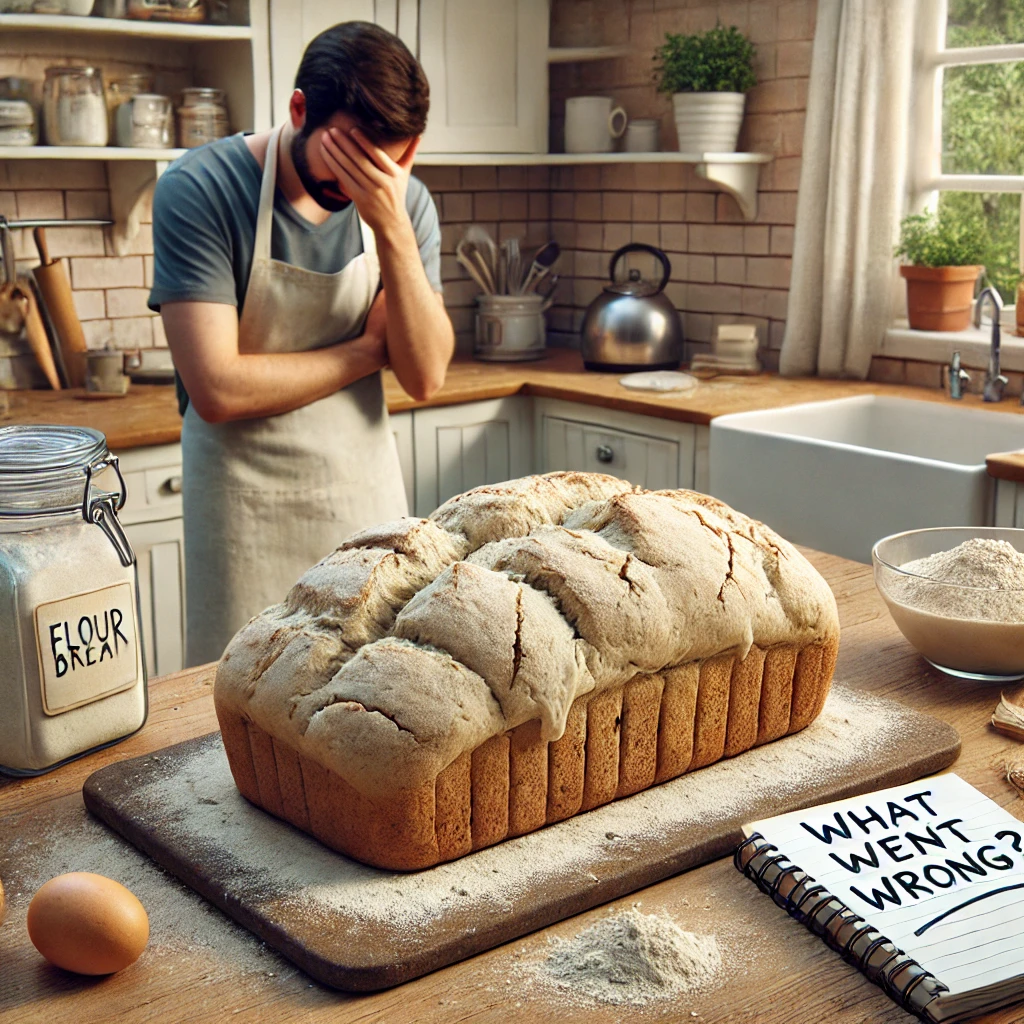Few things are more disappointing than spending time mixing, kneading, and waiting—only to discover that your bread dough didn’t rise. Whether it stayed flat, turned out dense, or barely puffed up in the oven, a loaf that doesn’t rise properly is a common issue for home bakers.
But don’t worry—this isn’t the end of your bread-baking journey. In this guide, we’ll go over the most frequent reasons bread fails to rise and give you actionable tips to fix it next time (or even salvage it now).
1. Was Your Yeast Alive?
The most common culprit is inactive yeast.
How to check:
- Mix 1 tsp of sugar into ¼ cup warm water (not hot—around 100–110°F or 38–43°C).
- Add 1 tsp yeast and wait 10 minutes.
- If it bubbles and foams → it’s alive.
- If it stays flat → your yeast is dead.
Solutions:
- Always check expiration dates.
- Store yeast in a cool, dry place (or in the fridge/freezer for long-term use).
- Proof it before using, especially if it’s been stored a while.
2. Was the Water Too Hot?
Yeast is sensitive—hot water can kill it instantly.
Safe zone: 95–110°F (35–43°C)
If you used boiling or very hot water, that may have killed the yeast before it got a chance to work.
Fix for next time: Use a thermometer or test water on the inside of your wrist—it should feel warm, not hot.
3. Did You Add Salt Too Early?
Salt is essential for flavor and gluten structure, but it can inhibit or kill yeast when added directly on top.
What to do:
- Mix salt into flour before combining with yeast.
- Or dissolve yeast in water first, then add other ingredients.
4. Was Your Dough Too Cold?
Cool environments slow fermentation—sometimes too much.
Signs:
- Dough rises very slowly or not at all.
- It’s still firm and tight after an hour.
Fix:
- Place dough in a warmer spot (70–80°F / 21–27°C is ideal).
- Use your oven (turned off) with just the light on.
- Wrap the bowl in a towel or place it near a warm appliance.
5. Did You Under-Knead or Over-Knead?
Gluten development is key for trapping gas and rising.
Under-kneaded dough:
- Weak structure → can’t hold gas
- Feels sticky and floppy
Over-kneaded dough:
- Too tight and elastic → hard for yeast to expand it
- Feels dry or rubbery
What to do:
- Knead until dough is smooth, elastic, and springs back when pressed.
- Use the “windowpane test”: stretch a piece—if it doesn’t tear easily, it’s ready.
6. Did the Dough Overproof?
If you let your dough rise too long, it may collapse.
Signs of overproofing:
- Dough is very soft, wet, and bubbly
- Collapses when touched
- Smells overly sour (especially with sourdough)
Fix:
- Punch down gently, reshape, and do a shorter final proof.
- For next time, watch your dough—not the clock.
7. Was the Dough Too Dry?
Low hydration doughs can struggle to rise.
Signs:
- Dough is stiff and cracks on the surface
- Slow or uneven rise
Fix:
- Add a little more water when mixing next time
- Aim for 60–70% hydration for softer loaves
8. Oven Spring Didn’t Happen?
Even well-proofed dough can flatten if:
- Oven wasn’t preheated
- No steam was used
- Scoring was skipped or too shallow
Tips:
- Preheat oven and baking vessel for 30–45 minutes
- Bake in a Dutch oven or use steam (water in tray or spritzing)
- Score the dough with a sharp blade just before baking
9. Can I Still Use Bread That Didn’t Rise?
Yes! If it’s not moldy or overly sour, there are still options.
Use dense bread for:
- Croutons or breadcrumbs
- Bread pudding
- Stuffing
- Toasted with dips (if the crust is nice)
Or, slice and freeze for future creative uses.
Final Thoughts
Bread that doesn’t rise isn’t a failure—it’s a learning moment. Every baker has been there, and each flat loaf helps you get one step closer to a perfect one.
Keep experimenting, take notes, and don’t be afraid to try again. Bread baking is part science, part intuition, and all heart.
